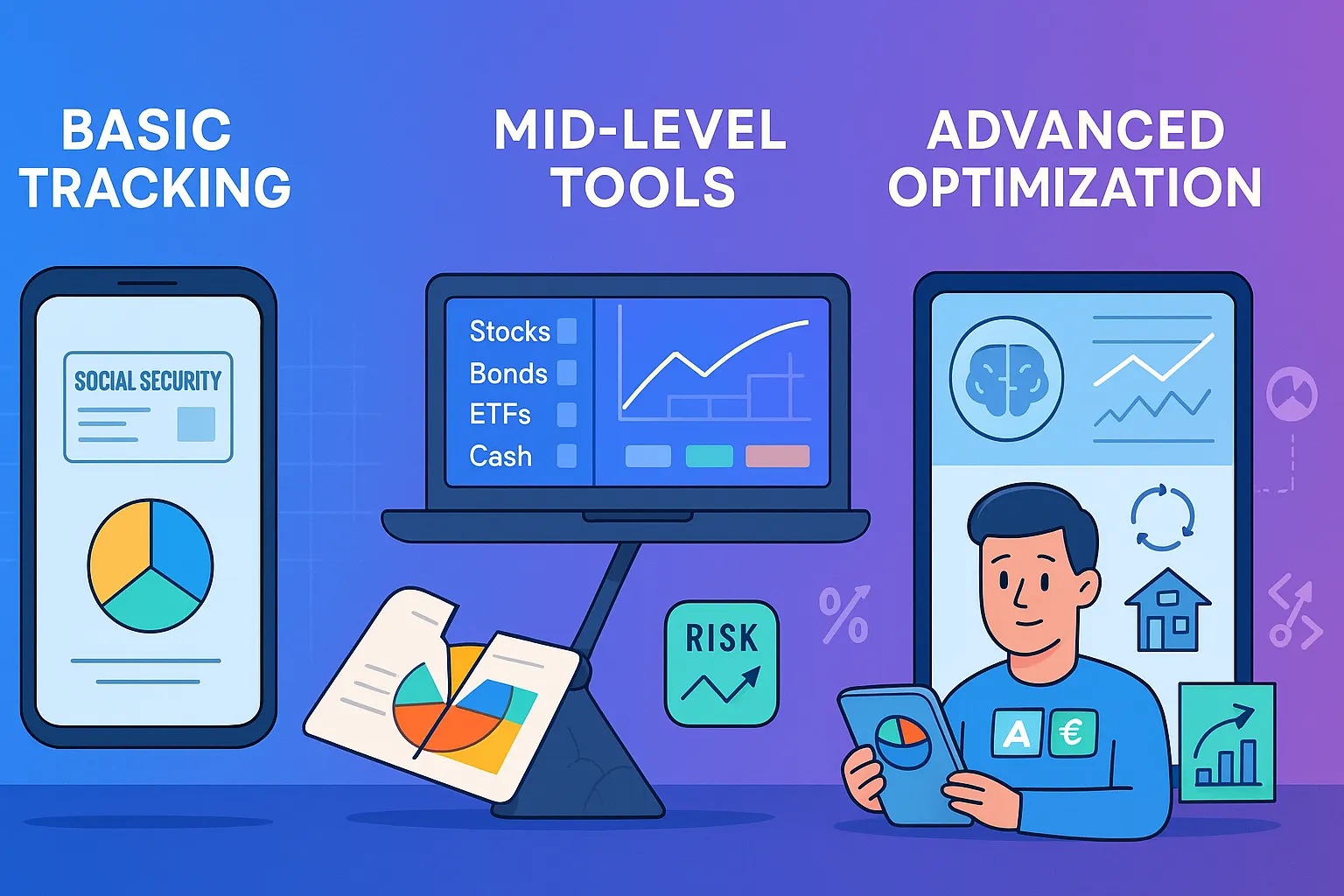Which Portfolio Analysis Tool Is Right for You?
Many investors rely on basic tracking tools that show past performance, but professional portfolio managers typically take it a step further—they use...

This content has been reviewed and edited by an Investment Advisor Representative working for Global Predictions, an SEC-registered Investment Advisor.
If you’ve ever checked your brokerage account and wondered, “Am I making the right investment choices?”, you’re not alone. Many investors rely on basic tracking tools that show past performance, but professional portfolio managers typically take it a step further—they use powerful tools that help them optimize for risk, returns, and long-term success.
The good news? Many of these tools are now accessible to everyday investors. The key is knowing which one fits your investment style and goals. Let’s break it down.
Key Takeaways
- Basic tools track your portfolio, but advanced tools help optimize your portfolio.
- Hedge funds often use risk analysis, factor investing, and stress testing—and now you can, too.
- There’s no one-size-fits-all tool—your choice depends on your investing approach.
- Comparing features and pricing ensures you find the best fit for your strategy.
What Do Portfolio Analysis Tools Actually Do?
A good portfolio tool does more than just show how much your investments are up or down. It helps you:
- Assess risk exposure – Are you unknowingly overexposed to a single sector or asset class?
- Optimize asset allocation – Is your mix of stocks, bonds, and alternatives balanced for your goals?
- Simulate different market conditions – How would your portfolio handle a recession or interest rate hike?
- Compare investment strategies – Which strategy performs better: value investing or momentum trading?
Why Professionals Use Advanced Tools
Hedge funds and institutions don’t just rely on past performance. They use real-time analytics, stress testing, and factor-based models to anticipate market shifts and make smarter decisions. The best part? You can access many of these insights, too—if you know where to look.
Comparing Popular Portfolio Analysis Tools
Please note that prices and features are subject to change, so it is recommended to check the official website for the up-to-date information (latest analysis done on March 12, 2025). Some of the following is purely opinion.
1. PortfolioPilot
- Recommended for: Investors looking for AI-driven insights and advanced portfolio optimization.
- Key Features: AI-powered portfolio assessment, tax-efficient investing, asset correlation analysis.
- Limitations: The platform offers a comprehensive suite of tools, which may present a learning curve for less experienced users.
- Pricing: Free version available; premium features from $20/month (Gold) or $69/month (Platinum) unlock deeper insights (14 days free trial).
- Website: PortfolioPilot
2. Portfolio Visualizer
- Recommended for: Investors who want advanced simulations and backtesting.
- Key Features: Monte Carlo simulations, factor-based analysis, historical performance modeling.
- Limitations: Requires manual input of portfolio / investments.
- Pricing: Free version available; paid plans unlock more features at $30/month (Basic) or $55/month (Pro).
- Website: Portfolio Visualizer
3. Empower (Personal Capital)
- Recommended for: Everyday investors who want a free, easy-to-use dashboard.
- Key Features: Asset allocation breakdown, retirement planning, fee analysis.
- Limitations: Free version may lack advanced risk analytics that some experienced investors might require.
- Pricing: Free financial tools available; advisory services require a minimum investment of $100,000 and incur management fees starting at 0.89% annually.
- Website: Empower
4. Bloomberg Terminal
- Recommended for: Professional traders and institutional investors.
- Key Features: Real-time data, macroeconomic insights, deep risk assessment.
- Limitations: Extremely expensive; probably overkill for casual investors.
- Pricing: ~$2,360/month.
- Website: Bloomberg Terminal
Beyond the Basics: Advanced Portfolio Metrics Used by Pros
If you’re ready to go beyond tracking your returns, here are four powerful techniques used by some professional investors:
1. Factor Investing Analysis
- Breaks down your portfolio exposure to factors like value, growth, momentum, and volatility.
- Helps refine asset allocation beyond simple sector diversification.
2. Risk Allocation
- Adjusts portfolio weights based on risk contribution rather than dollar amount.
- Helps balance the impact of different assets in volatile markets.
3. Monte Carlo Simulations
- Runs thousands of hypothetical market scenarios to assess future portfolio performance.
- Helps estimate worst-case drawdowns.
4. Stress Testing
- Tests portfolio resilience in different economic conditions (e.g., 2008 crash, interest rate hikes).
- Identifies weaknesses in asset allocation.
Next Steps:
- Identify your needs—Are you looking for basic tracking or deep analysis?
- Try out free versions—Many tools offer free trials or limited-access versions.
- Experiment with advanced metrics—Factor investing, Monte Carlo simulations, and risk analysis can change how you manage your portfolio.
How optimized is your portfolio?
PortfolioPilot is used by over 30,000 individuals in the US & Canada to analyze their portfolios of over $30 billion1. Discover your portfolio score now:





